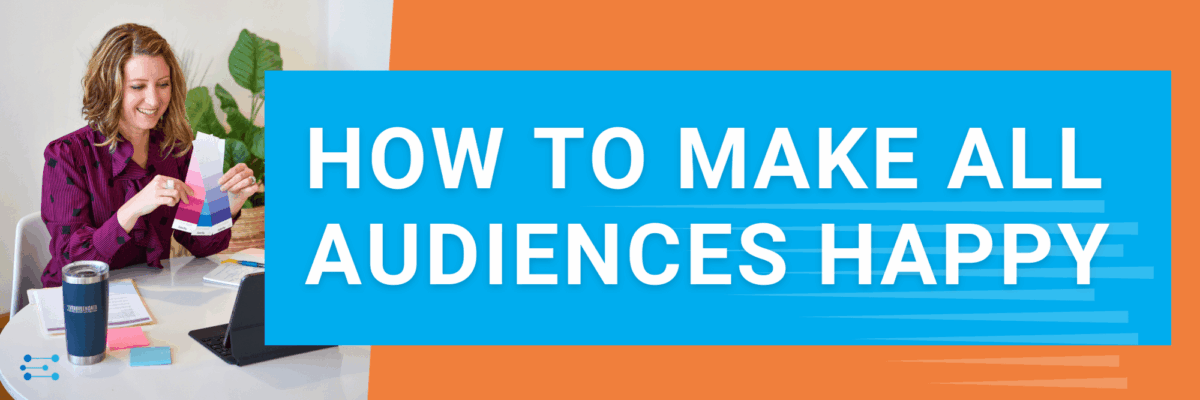How to Make All Audiences Happy
Before our dataviz workshop, Rachel emailed me with this: “I want to better understand how to communicate data driven results with a wide range of audiences (from peers to senior level).”
And I bet that goal has been rolling around in your brain too. How exactly do we stretch our arms so wide that we can tell a data story to audiences that seem so different from each other?
Lemme tell you about the tool we use at the start of projects to help answer this question.
The Data Communications Plan. It’s free.
First, identify your audiences.
If you work in a Fortune 500, like Rachel, your audiences might be:
other people on your team
your boss
your boss’s boss
the C-Suite
regulators
the board
the public
shareholders
the sales team
other industry partners
And there are corresponding audiences in other industries. Like instead of a Board of Directors, you might have a School Board. Samesies.
So just list out your audiences, even if it starts to make your armpits sweat a little when you think about how the heck you’ll ever get to all of them.
Don’t worry too much right now, but if it helps you breathe easier, put them in order of priority.
Next, articulate their big burning questions.
Aim to write out three big burning questions for each audience. Just three.
So make ’em the BIG BURNING ones. These will be the things that keep people from their sweet dreams at night. The things that they could get fired or promoted over.
Teacher: Are my students improving in Math?
CEO: Why aren’t sales increasing?
Communications Manager: Did the marketing campaign work?
CFO: What will it cost to make this transition and will the benefits be worth it?
Institutional Researcher: Which students aren’t graduating and why?
The public: Who the heck are you and will you make a difference in my life?
Politician: How can you help me fulfill my campaign promises and get re-elected?
Do these examples help you see what I mean by BIG, BURNING questions?
Your main job is to pull the data that answers these questions.
Then, take note of their level of detail.
Think: High / Medium / Low.
The closer your audience is to the day-to-day work, the higher level of detail they’ll want from you.
The nerdier (said lovingly) they are, the more detail they’ll expect. These are the folks who anticipate confidence intervals and notations about statistical significance.
People far away from the inner workings, like politicians and the public, just need that big picture (at least at first).
While the Data Communications Plan asks you for more information, even thinking through these first three pieces will help guide your data storytelling.
For example, the media (asking questions on behalf of the public) might be cool with a graph like this:

But a gaggle of epidemiologists will expect something more like this:

Everyone has questions like Rachel’s. The bottom line is: One size does not fit all. So let the Data Communications Plan help you right-size your story for your audience.
Grab your copy of the Data Communications Plan here. I’ll talk you through filling out the whole thing so you’re set up to stretch your arms around all your audiences.


